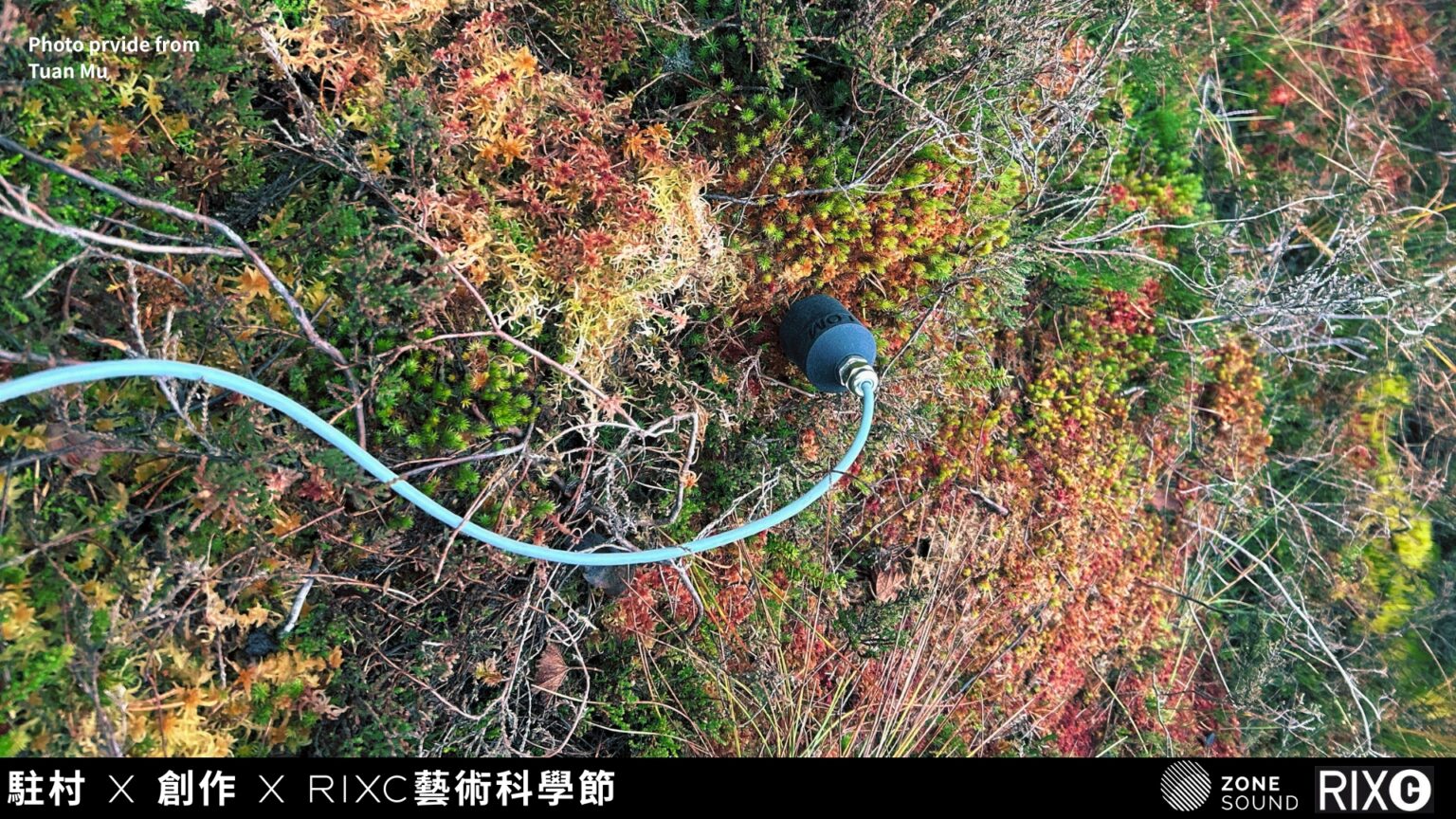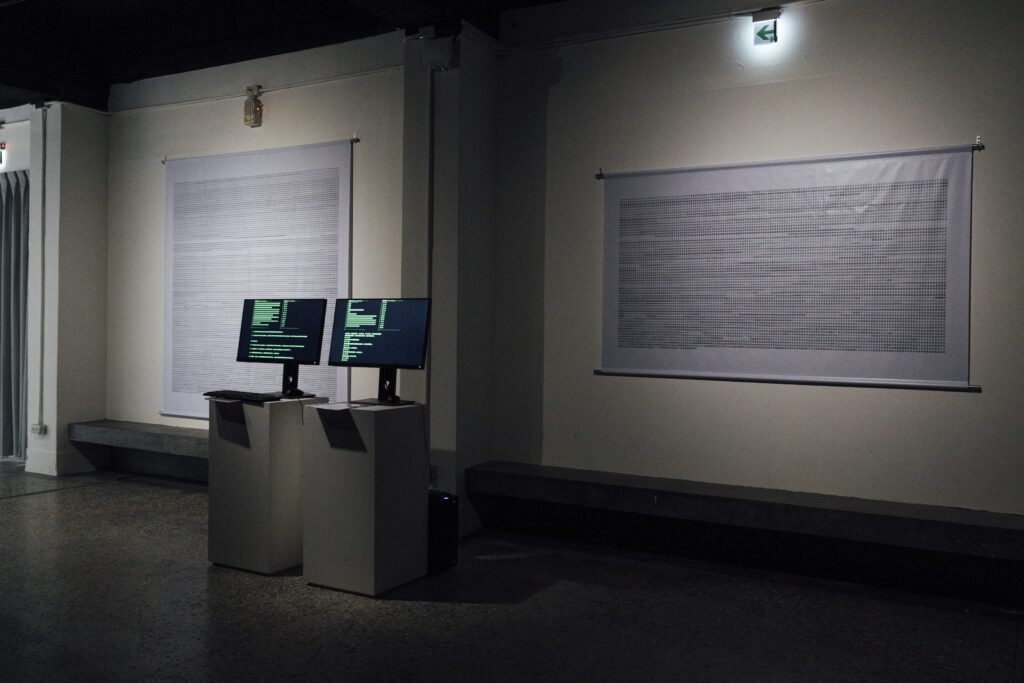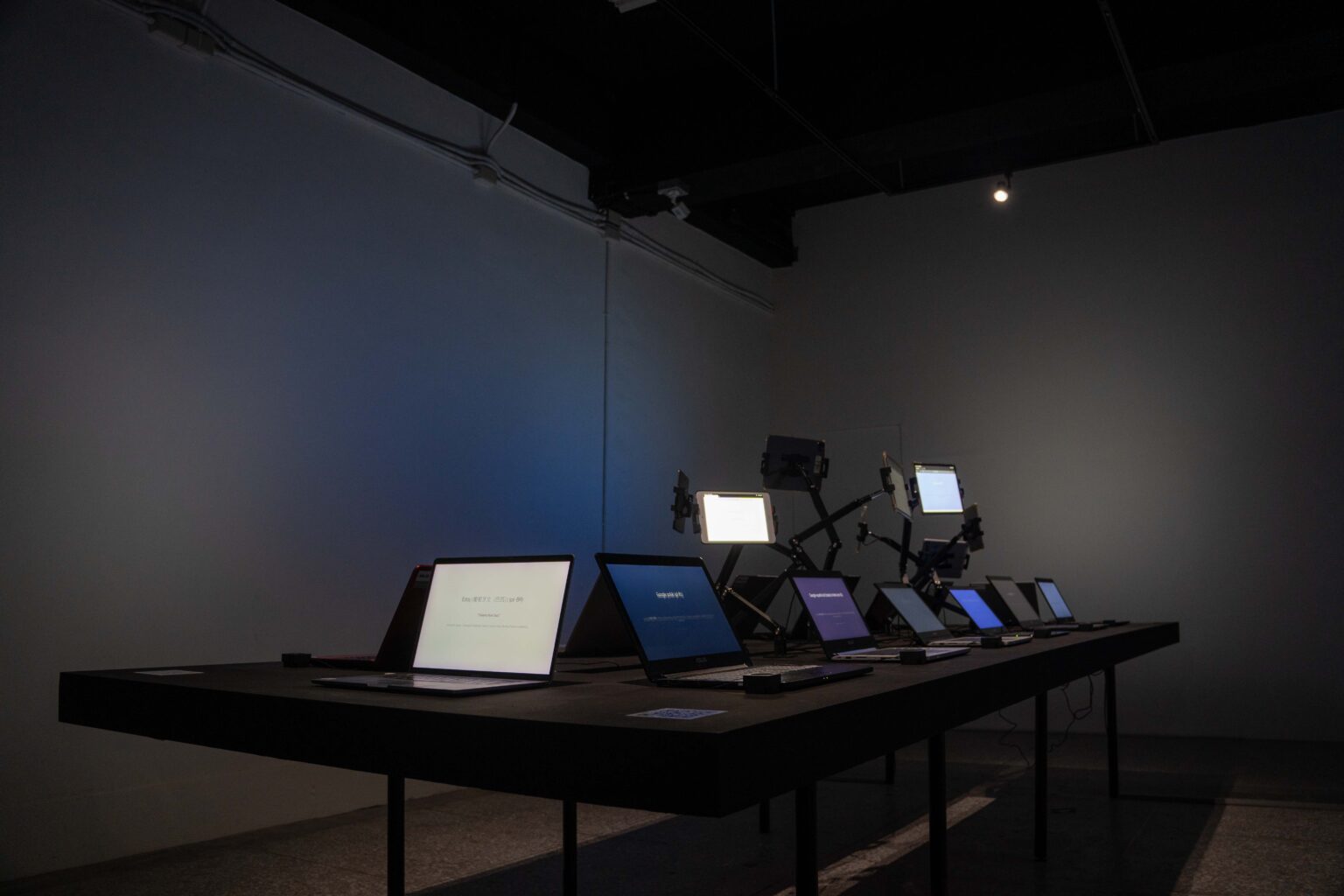
〈潛域〉 ——臺灣拉脫維亞科技藝術交流計畫 Subterranea – Taiwan–Latvia Art & Technology Exchange Program
「我們所觀察到的並非自然本身,而是我們透過測量方法所揭示的自然。」 ——沃納·海森堡(Werner Heisenberg

賴彥勳《文本分析計畫:意識的形構 (Text Analysis) 》
程式設計:洪念寬、帆布、油性顏料(Programming: Hung Nien-Kuan, Canvas, Oil Paint)/尺寸依場地而定(Dimension Variable)/2023
我們能否觀察到意識的物質性?
一份文字文本,是以作者所選定的一個語言系統為基礎、以該系統所使用的最小意義單位作為基本敘事單元,再根據作者意識,以語言系統的規則進行特定的排列組合,進而將作者心中非具象的意識進行連續性、具時間性的虛構性記敘,使其成為一種基於作者意識的虛構文本。這個文本能夠被作者以外的其他人閱讀,進而達到可以重複被讀取、傳遞原作者意識的目的。透過重新排列文本內的文字組合以及將使用字元進行量化,我們可以破壞文字文本基於語言系統規則的時間性。
藉由消除文本的時間性,以及讓虛構文本回到非虛構的物質形構狀態,亦即回歸文字的原始狀態,使我們可以觀察到此虛構文本基於語言文字的構形。藉此,我們或許得以窺見潛藏在文字文本之下,那一份意識的物質性。
Can we observe the materiality of consciousness? A piece of textual content is based on the language system chosen by the author, using the smallest units of meaning within that system as fundamental narrative elements. Following the author’s consciousness, specific arrangements and combinations are made according to the rules of the language system. This process transforms the non-concrete consciousness of the author into a continuous, temporally constructed fictional narrative, resulting in a kind of fictional text rooted in the author’s consciousness. This text can be read by others besides the author, achieving the purpose of repeated reading and transmitting the original author’s consciousness. By rearranging the textual combinations within the text and quantifying the use of characters, we can disrupt the temporality of the textual content based on the rules of the language system. Through eliminating the temporality of the text and returning the fictional text to a non-fictional material construction, that is, reverting to the original state of text, we are able to observe the structural formation of this fictional text based on language. Through this, we may be able to catch a glimpse of the materiality of consciousness that lies beneath textual content.
藝術家介紹
大致可以用「結構觀察」敘述賴彥勳的作品傾向:觀察在權力階級的上下,各單位之間的凝視結構;觀察語言、聲音的結構;觀察形成記憶的結構;觀察物的結構。結構是各種事件趨勢的結果、遺留物。透過觀察結構(或者在這邊,也可以說是構成物、關係的規則),有可能可以察知到相對隱晦,不可名狀之物。試圖將這些不可名狀之物用旁敲側擊的方式拉上較容易被觀測的視覺層面,是他傾心的事情。
因為這些不可名狀之物,可能和新性有著密切關係。我們難以真正迎接「新」的到來,它永遠保持著將至未至的狀態,但我們可以試圖站在一個位置,遠眺它即將形成的形狀。
LAI Yen-Hsun’s artistic inclination can be described as an “observance of structures.” He observes the gaze structures between units within hierarchical power dynamics; he observes the structures of language and sound; he observes the structures that give rise to memories; and he observes the structures of objects. Structures are the outcomes and remnants of various events and trends. Through observing structures (or in this context, the rules that constitute entities and relationships), it is possible to discern relatively elusive and ineffable entities. Lai attempts to subtly bring these ineffable entities onto a more easily observable visual plane, a pursuit that deeply resonates with him. Because these ineffable entities might be closely related to the new and the novel, we struggle to truly embrace the arrival of the “new,” which perpetually exists in a state of imminent yet unattained presence. Nonetheless, we can endeavor to position ourselves to glimpse the forming shapes it is about to take.
更多藝術家資訊:https://creamta.com/resume
展出日期|2023.09.01 – 2023.09.06
展出地點|臺灣當代文化實驗廣場 C-LAB
攝影紀錄|張耀翔
延伸閱讀:
STS年會《重置世界的尺度 (Rescaling the World)》
表面與輪廓:重新定義石頭和空間的三重解讀——離岸、地殼與星、移山

「我們所觀察到的並非自然本身,而是我們透過測量方法所揭示的自然。」 ——沃納·海森堡(Werner Heisenberg
駐村週記 2025.10.21-10.27 在經過近12小時的飛行和轉機後,我從亞美尼亞抵達拉脫維亞的首都里加,正式展開
